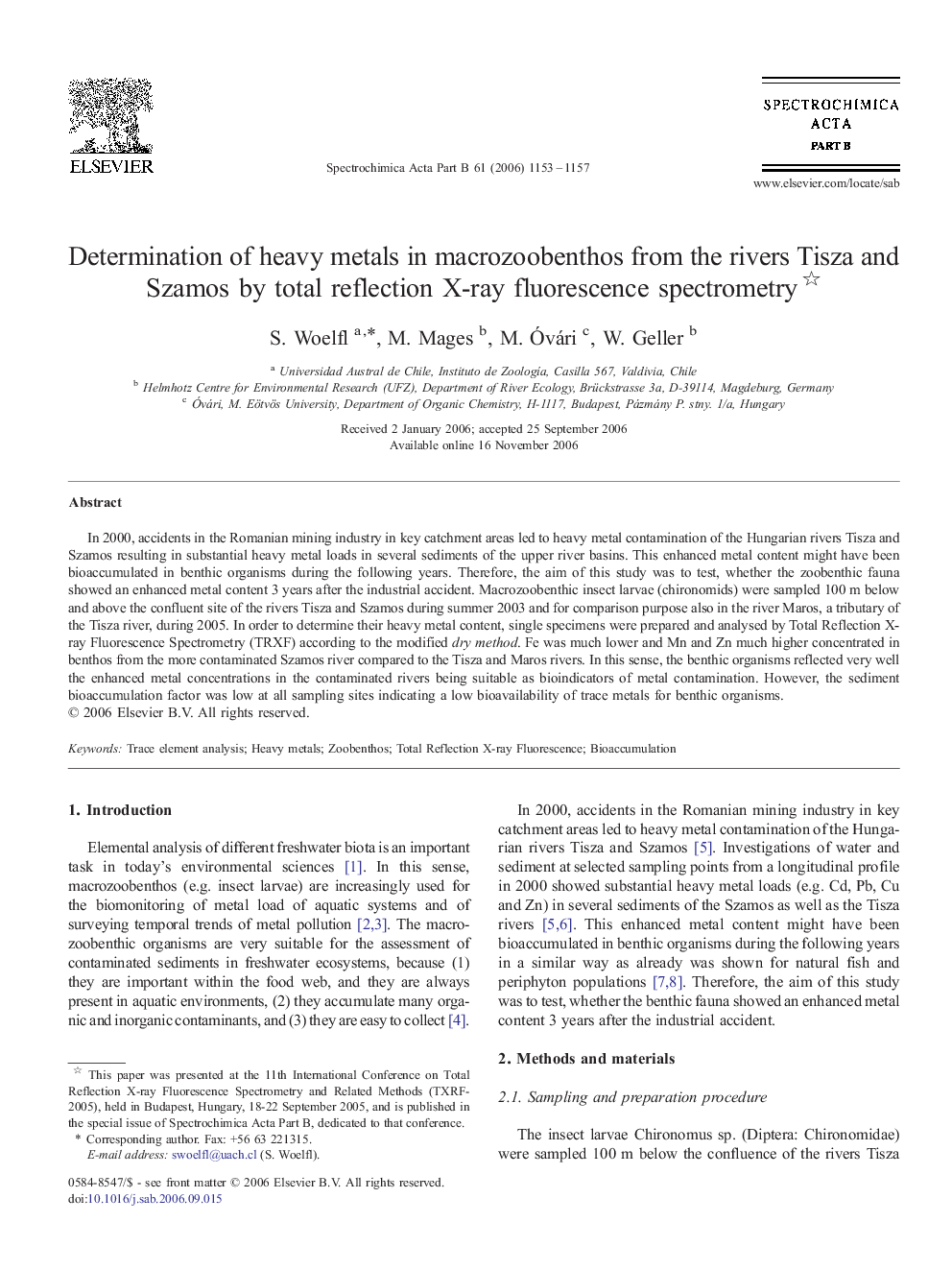| Article ID | Journal | Published Year | Pages | File Type |
|---|---|---|---|---|
| 1240849 | Spectrochimica Acta Part B: Atomic Spectroscopy | 2006 | 5 Pages |
In 2000, accidents in the Romanian mining industry in key catchment areas led to heavy metal contamination of the Hungarian rivers Tisza and Szamos resulting in substantial heavy metal loads in several sediments of the upper river basins. This enhanced metal content might have been bioaccumulated in benthic organisms during the following years. Therefore, the aim of this study was to test, whether the zoobenthic fauna showed an enhanced metal content 3 years after the industrial accident. Macrozoobenthic insect larvae (chironomids) were sampled 100 m below and above the confluent site of the rivers Tisza and Szamos during summer 2003 and for comparison purpose also in the river Maros, a tributary of the Tisza river, during 2005. In order to determine their heavy metal content, single specimens were prepared and analysed by Total Reflection X-ray Fluorescence Spectrometry (TRXF) according to the modified dry method. Fe was much lower and Mn and Zn much higher concentrated in benthos from the more contaminated Szamos river compared to the Tisza and Maros rivers. In this sense, the benthic organisms reflected very well the enhanced metal concentrations in the contaminated rivers being suitable as bioindicators of metal contamination. However, the sediment bioaccumulation factor was low at all sampling sites indicating a low bioavailability of trace metals for benthic organisms.
